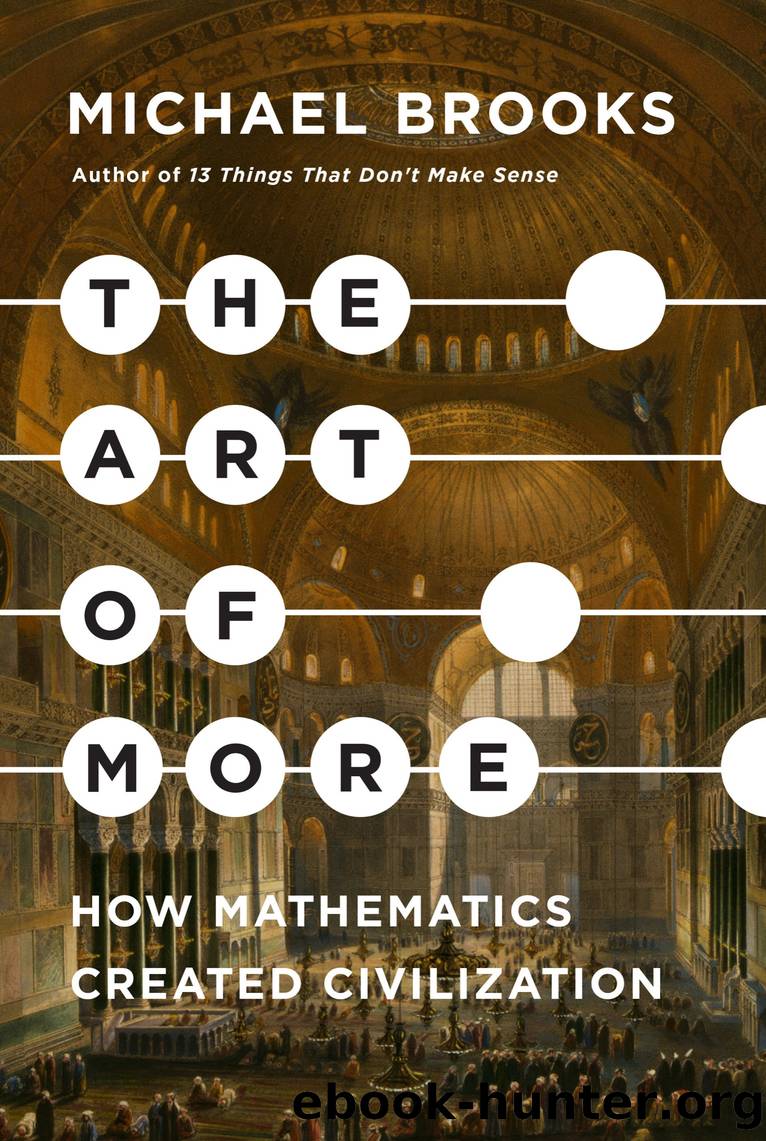The Art of More by Michael Brooks

Author:Michael Brooks [Brooks, Michael]
Language: eng
Format: epub
Publisher: Knopf Doubleday Publishing Group
Published: 2022-01-18T00:00:00+00:00
If thatâs not raising your eyebrows, how about this: you can derive e from plotting the places the German V-1 flying bombs landed in London during the Second World War. Itâs also there when you trace the rate at which your DNA incurs mutations. However, none of these are accidental or mystical occurrences. They are a consequence of eâs involvement in the numbers describing certain kinds of events. If an event occurs repeatedly, but rarely, and each event is independent of the others, youâll be able to describe the pattern they cause (whether itâs in time or space) using something called a âPoisson distributionâ. Weâll come across it again later, when we look at statistics in Chapter 7, but the way the numbers work in the Poisson distribution means that Eulerâs number e is always involved. However, by far the most important thing about e arises when doing calculus, because e is its own derivative. Letâs have a look at why that matters.
I mentioned in the chapter on calculus that there are various rules for calculating the derivative â the slope, effectively â of a curve. When the curve has the form y = bx, the rules say that its derivative is simply kbx, where k is an unknown factor that is numerically related (in a somewhat complicated way) to b. In other words, for any exponential function, the derivative is k multiplied by the original function. Given that, thereâs an obvious question: is there any circumstance where the number k is equal to 1? That would be nice: it would make the function exactly its own derivative, which would make its calculus unbelievably easy.
The answer to that obvious question is yes. And that circumstance is when b, the base in our original expression y = bx, is 2.71828â¦In other words, if you differentiate y = ex, dy/dx = ex.
Itâs almost impossible to overstate how important this makes e. If you can shift your exponential functions around, whatever base they are in, and put them in base e, you can suddenly do their calculus with consummate ease, allowing you to solve all kinds of interesting problems. If you want to know the number of new cases of a viral infection to expect tomorrow, for instance â you know that it will be somehow related to the number of cases today. Itâs an exponential function that you might write using arbitrary numbers. But if you want to play around with the maths and find properties such as the rate of change, itâs often easier to write it in terms of Eulerâs number e raised to some multiple of the time thatâs passing. Thatâs because that multiple will be the proportionality constant between the total number of cases and the rate of growth. For the same reasons, we use e to help us to understand a vast range of phenomena. e is central to financial matters such as compound interest; the arrangements of branching blood vessels in the human body; the way
Download
This site does not store any files on its server. We only index and link to content provided by other sites. Please contact the content providers to delete copyright contents if any and email us, we'll remove relevant links or contents immediately.
Kathy Andrews Collection by Kathy Andrews(10507)
The remains of the day by Kazuo Ishiguro(7542)
Spare by Prince Harry The Duke of Sussex(4188)
Paper Towns by Green John(4163)
The Body: A Guide for Occupants by Bill Bryson(3789)
Be in a Treehouse by Pete Nelson(3206)
Harry Potter and the Goblet Of Fire by J.K. Rowling(3025)
Goodbye Paradise(2949)
Never by Ken Follett(2872)
Into Thin Air by Jon Krakauer(2695)
The Remains of the Day by Kazuo Ishiguro(2614)
The Genius of Japanese Carpentry by Azby Brown(2602)
The Cellar by Natasha Preston(2592)
Drawing Shortcuts: Developing Quick Drawing Skills Using Today's Technology by Leggitt Jim(2528)
120 Days of Sodom by Marquis de Sade(2428)
Architecture 101 by Nicole Bridge(2348)
The Man Who Died Twice by Richard Osman(2289)
Machine Learning at Scale with H2O by Gregory Keys | David Whiting(2264)
Fairy Tale by Stephen King(2058)
